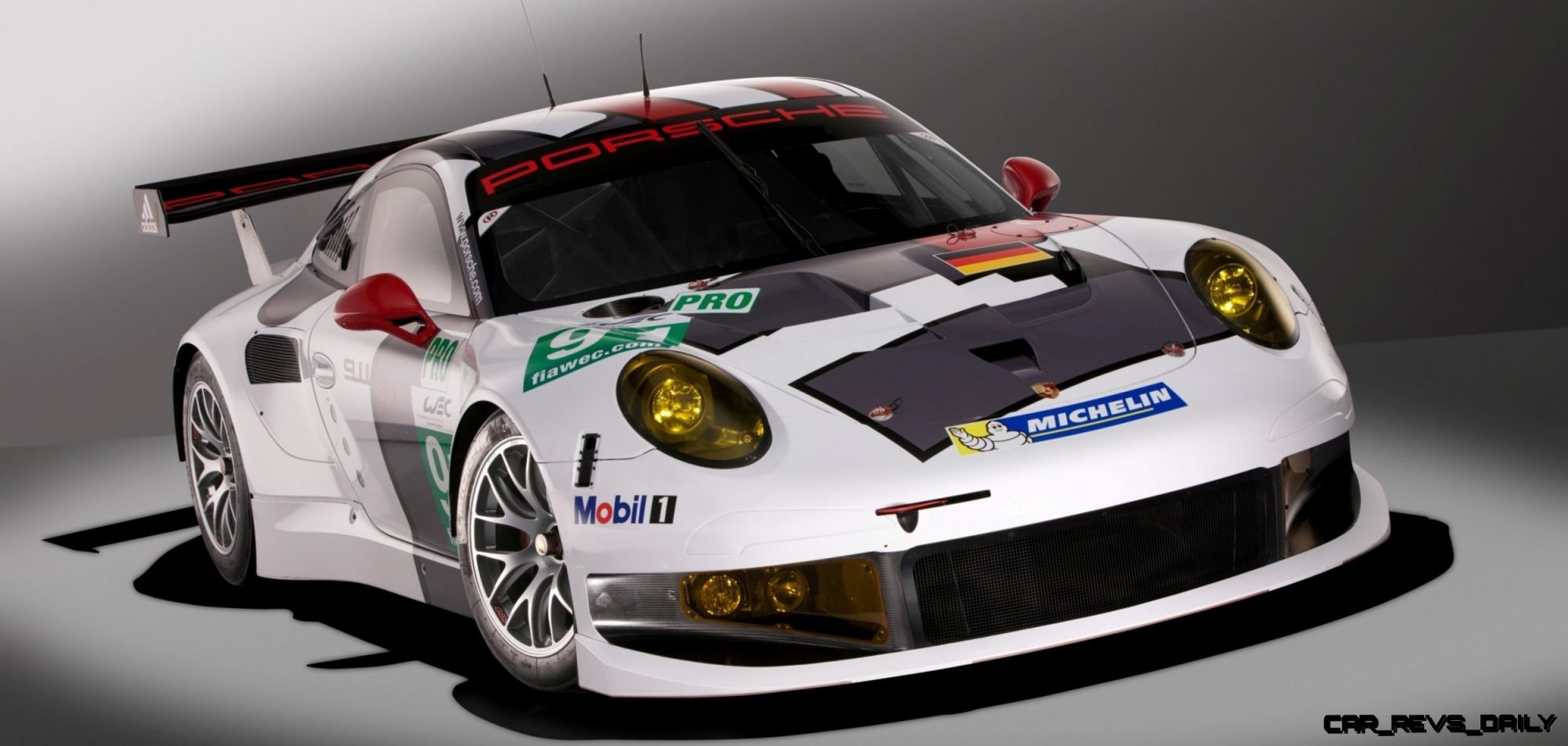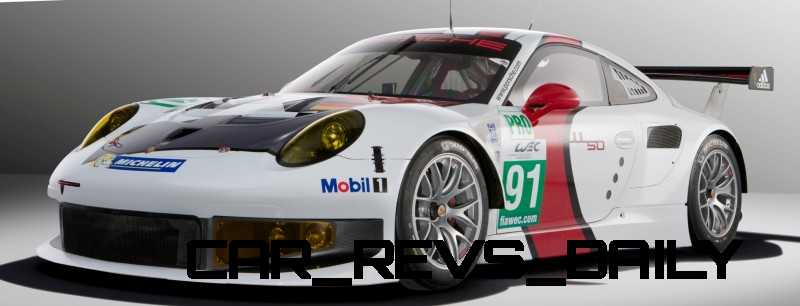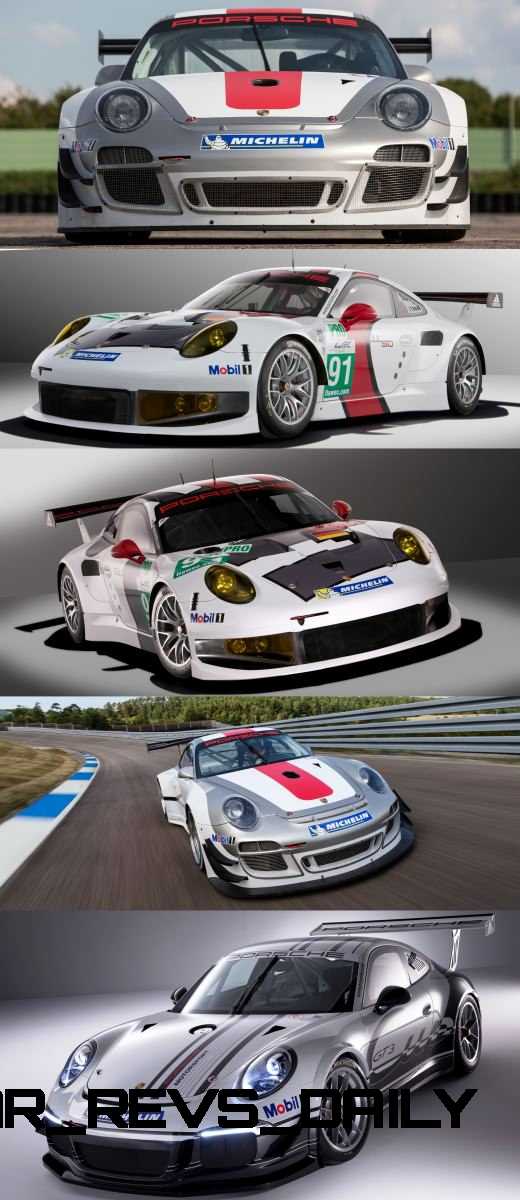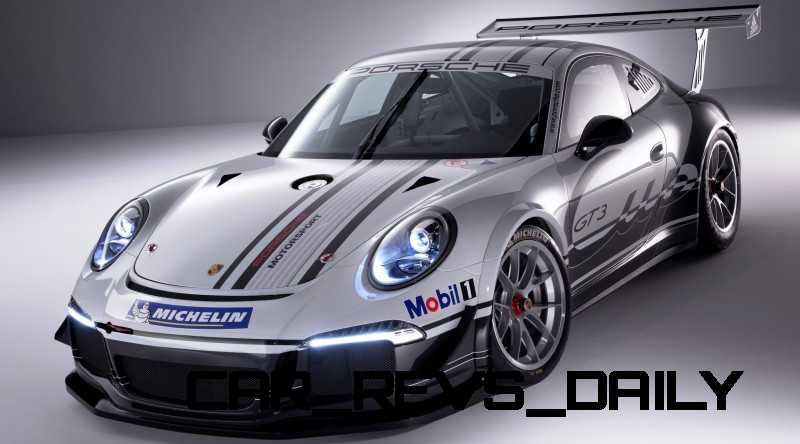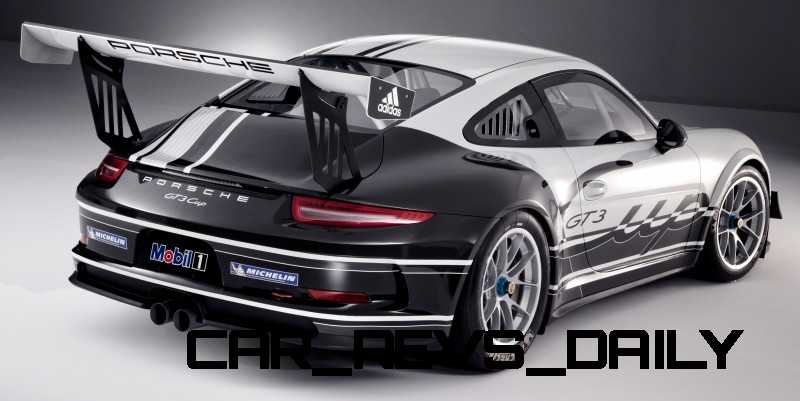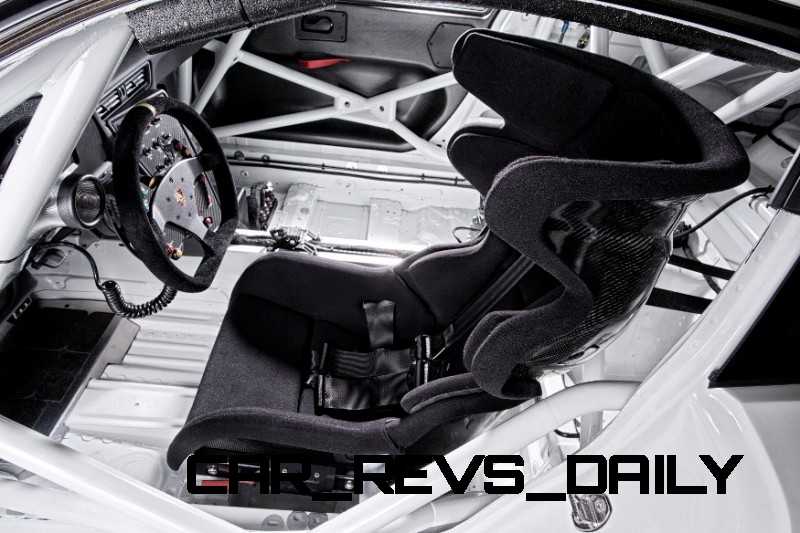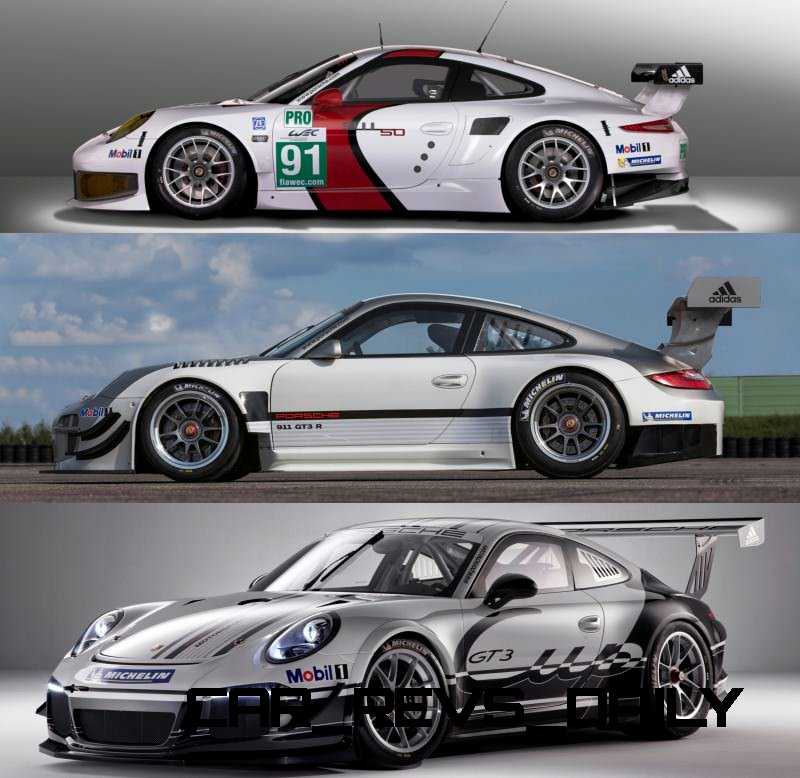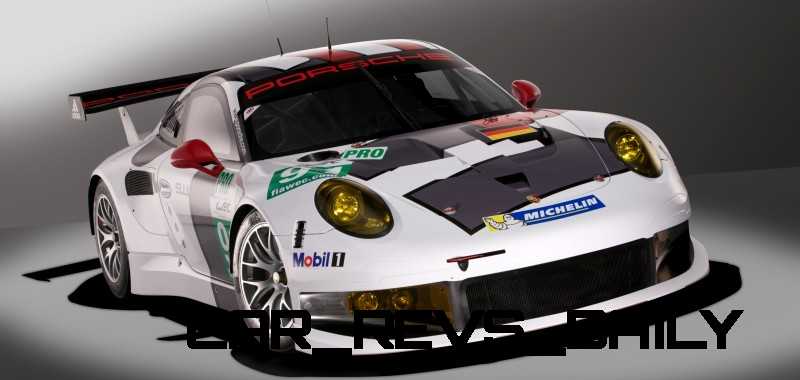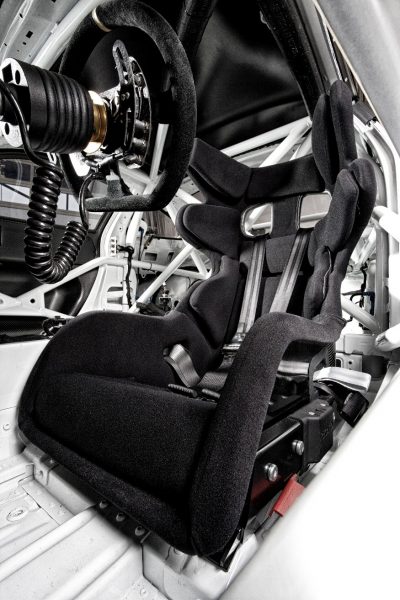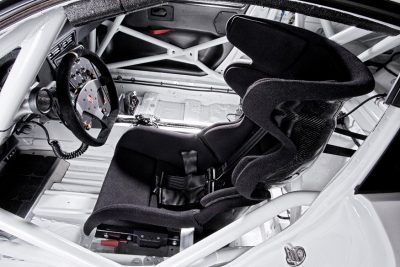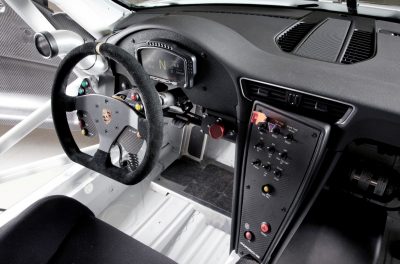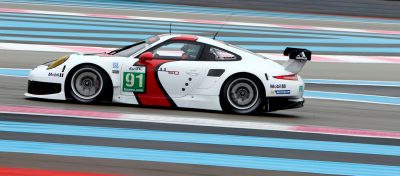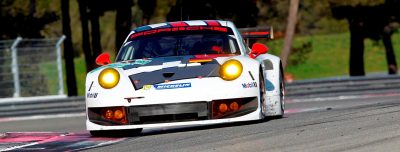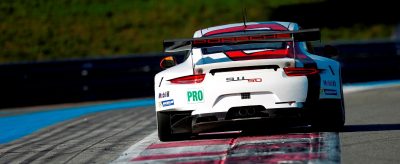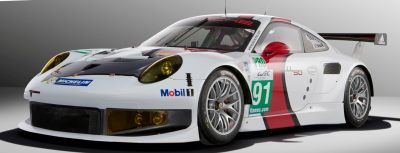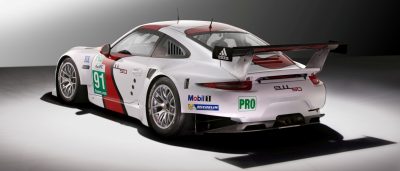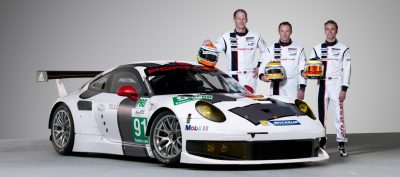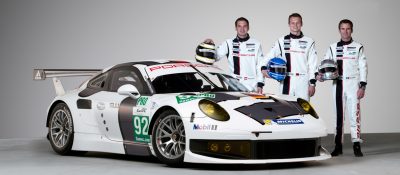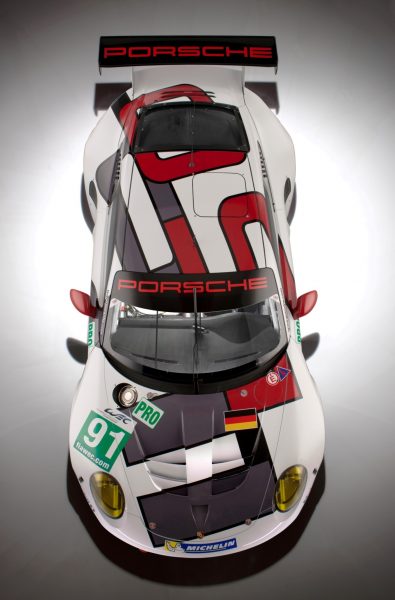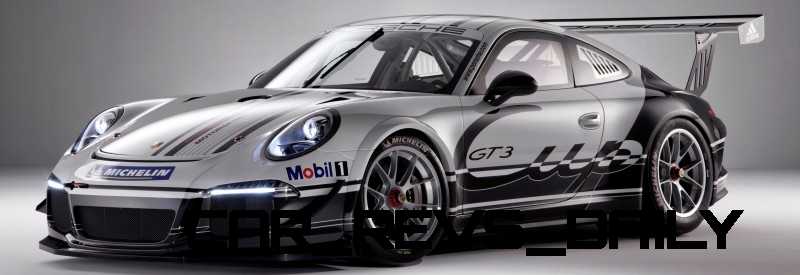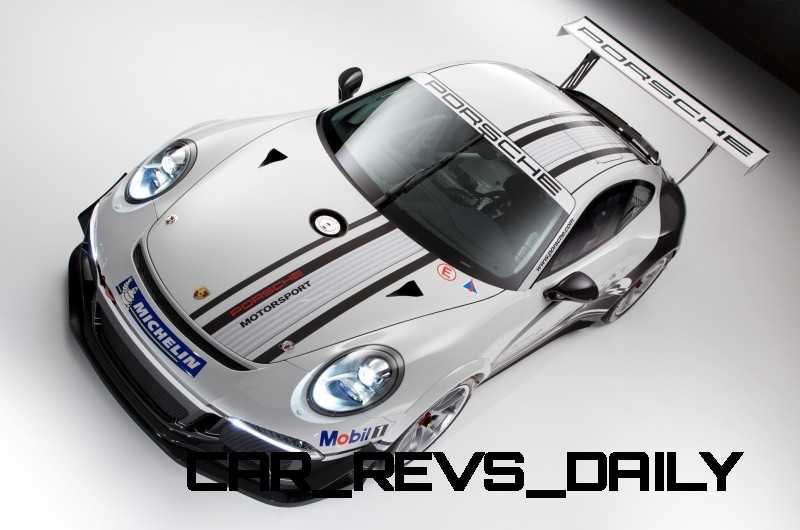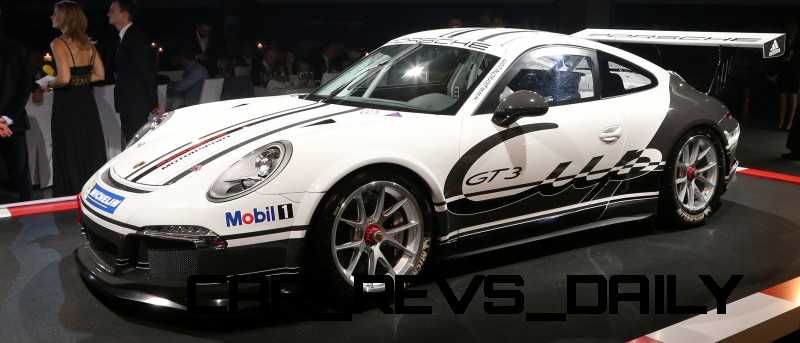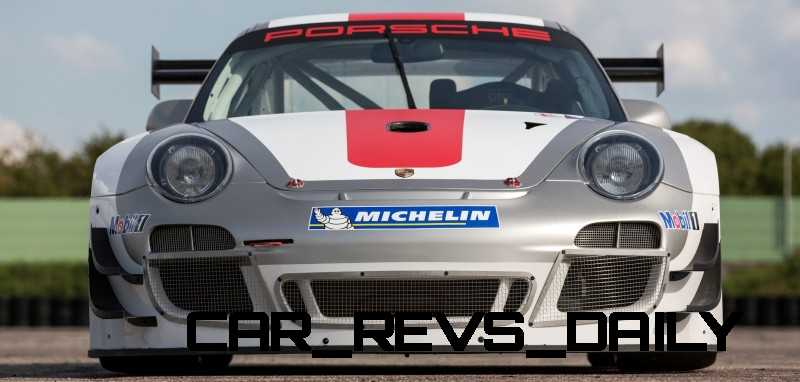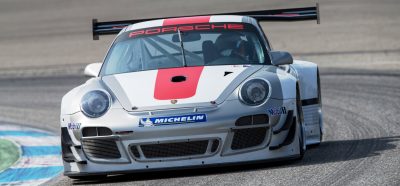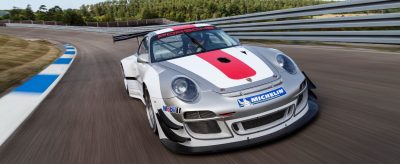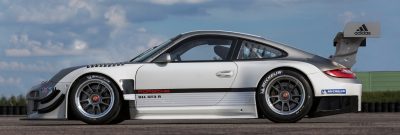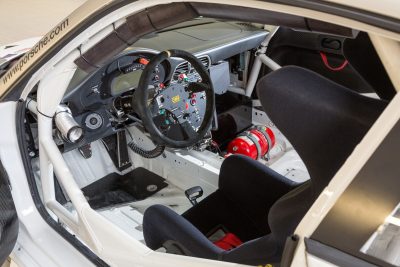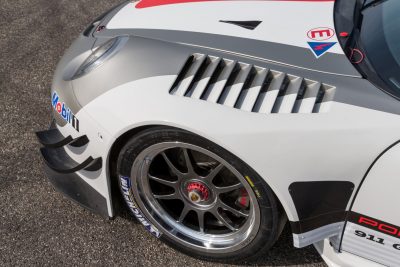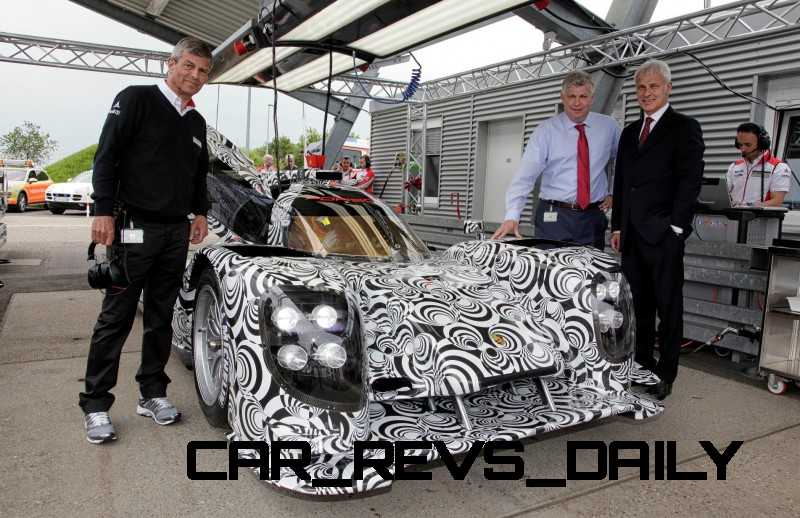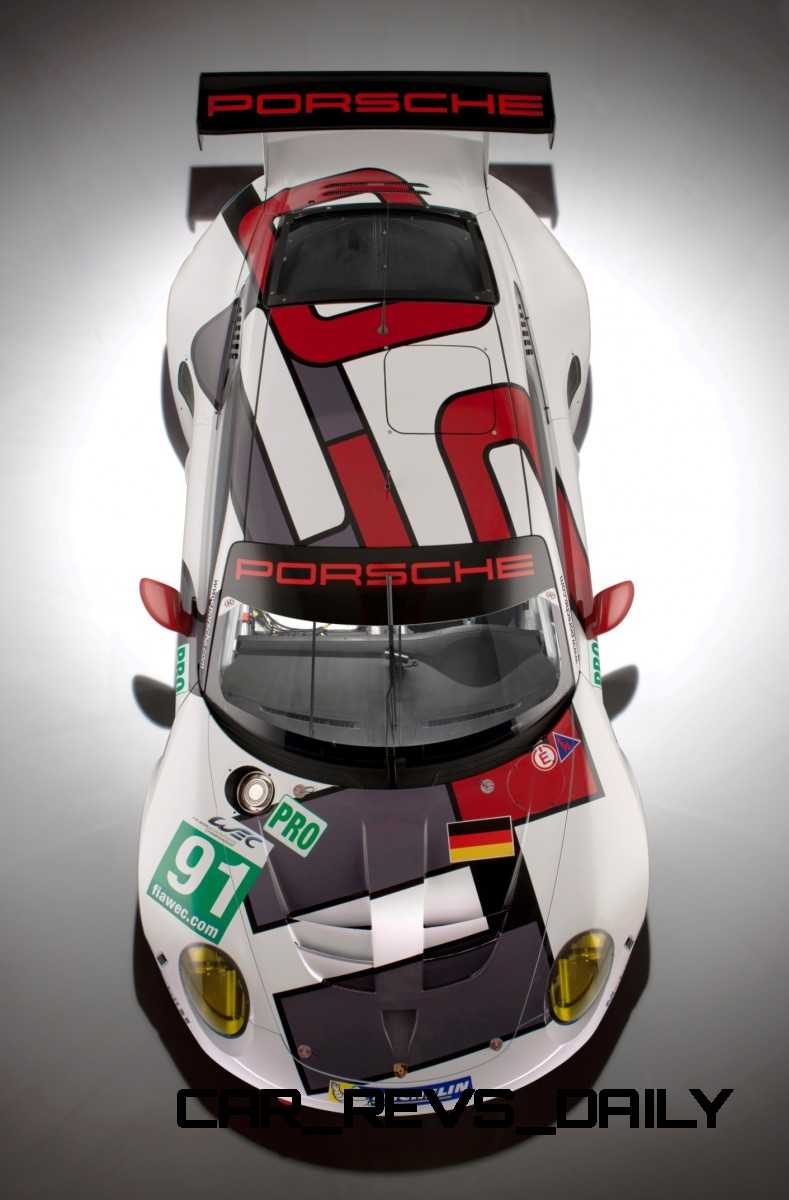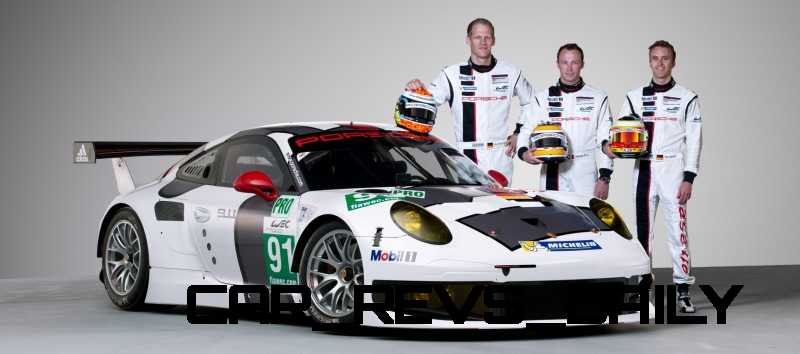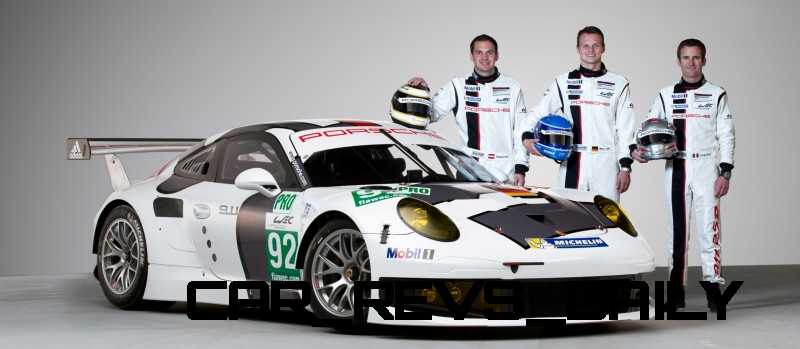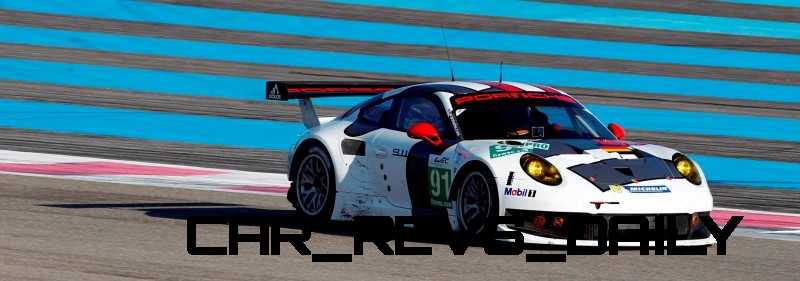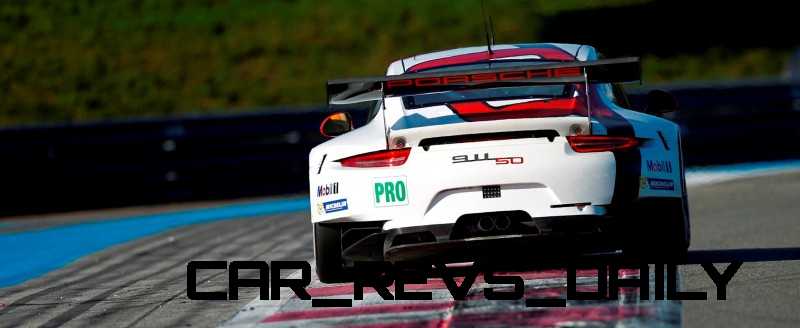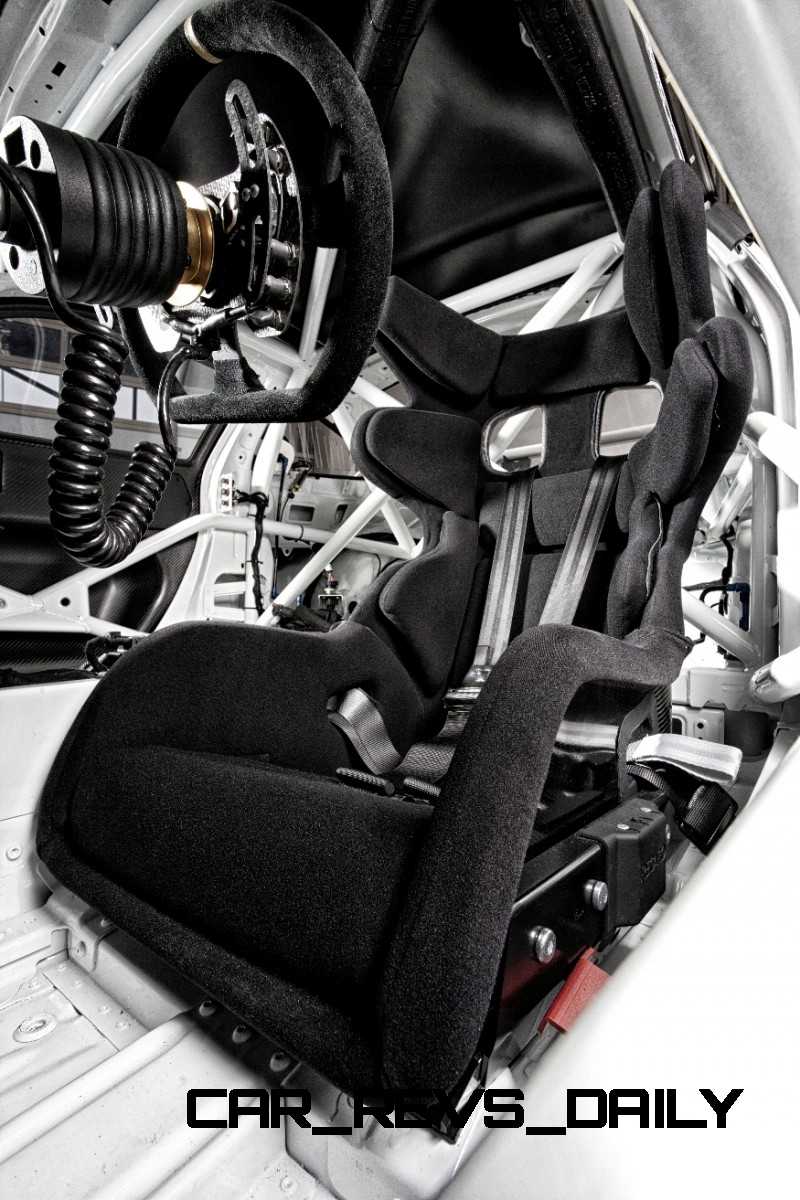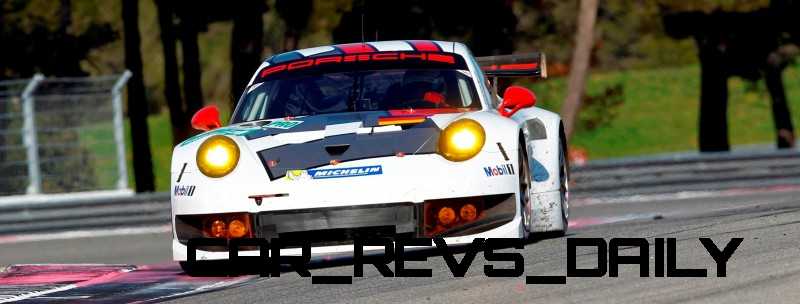The latest 2014 Porsche 911 RSR looks quite different from its most recent relatives in the 911 racing side of the Porsche family tree.
This roundup shows three of the most hardcore 911 racers that will contest the 2014 seasons across various series around the world.
Yes, the rules from all these racing groups will be very different in how much enhancement is allowed: from the road-car side of the spectrum in the 991 GT3 Cup, all the way to the pure prototype RSR model.
The RSR is a seriously hardcore racing machine that will howl its boxer six bellow at full blast around all tracks.
The naturally-aspirated engine is paired with a six-speed pneumatic sequential transmission, a dramatic chassis redesign to allow such huge tires, and an interior passenger seat that is stripped down to galvanized alloy.
The pure racecar designs in the RSR mark a big change versus the previous GT3 R Hybrid – which dominated the time boards all season but was not able to officially win the sports car classes due to its experimental specs in the Le Mans WEC.
2014 Porsche 911 RSR (Type 991)
2014 Porsche 911 GT3 Cup (Type 991)
2013 Porsche 911 GT3 R (Type 997)
Official Porsche Motorsport release below.
The new 911 RSR, which is based on the seventh generation of the iconic 911 sports car, follows in the footsteps of its successful predecessor, the 911 GT3 RSR. As with the production vehicle, the wheelbase grew by about ten centimetres. A new wishbone front suspension replaces the previously used McPherson struts. Another new development from Porsche Motorsport is the particularly lightweight racing gearbox. The six gears are selected via paddles on the steering wheel. The 470 hp, 4.0-litre six-cylinder boxer engine was taken from the predecessor and optimised in detail.
One of the priorities in the development of the new 911 RSR was the more evenly balanced weight distribution. The centre of gravity is also significantly lower than that of its predecessor. Carbon fibre played a crucial role in the new design.
The front and rear mudguards, front and rear lids, doors, underbody, wheel arches, rear wing, dashboard and centre console are constructed from the very light and strong material. Moreover, all windows are made of particularly thin and light polycarbonate. Also contributing to the weight reduction is the lithium-ion battery known from the GT road-legal models.
The look of the new 911 RSR is dominated by the flared mudguards and the deep cooling air intakes at the front. With a new air ducting, the radiator is now centrally-located in the front and even more effective than in the previous model. At the same time, the cockpit air-conditioning became more efficient. The quick-change concept of the body parts was specially adapted for endurance racing, allowing for easier maintenance and shorter repair times. The front end, front lid and rear panel are fitted with quick release systems and can be replaced within seconds.
Low positioned static cornering lights provide improved vision and enhanced safety during the night. The reflective labelling and anti-glare lighting of the control elements in the cockpit ensure optimal legibility in the dark. The arrangement of the switches on the new steering wheel and the pilot-oriented centre console were designed in co-operation with the ten Porsche works drivers. All works drivers took part in the design of the 911 RSR contributing their vast experience in GT racing.
In order to keep the engineers in the pits up-to-date with all relevant vehicle data, the live telemetry transmits more than 200 different measurements straight to the pit wall stand via an antenna on the roof. Additionally, all data are stored on a memory card onboard the vehicle.
Driving the Porsche 911 RSR with starting number 92 are Porsche works pilots Marc Lieb (Germany) and Richard Lietz (Austria), who already shared a cockpit in the 2012 WEC. At the first two races of the season in Silverstone (14.4) and Spa (4.5) as well as at the 24 Hours of Le Mans (22.6), they receive support from their works driver colleague Romain Dumas (France). Factory pilots also drive the #91 sister car, with Joerg Bergmeister (Germany) and Patrick Pilet (France) making up a team. In Silverstone, Spa and Le Mans, the duo is joined by Timo Bernhard (Germany).
“Forty years ago the first 911 RSR set new standards. Today we’d like to prove with the new 911 RSR that the 911 has still got what it takes to be a champion,” says Hartmut Kristen, Head of Motorsport at Porsche. “I am proud that we’ll return to Le Mans in 2013 with a full works team for the first time since 1998. Our squad has worked extremely hard over the past months to turn the excellent basis of the road-legal 911 into an even better race car. Over the last weeks our engineers, mechanics, and works drivers were testing more or less non-stop.”

What the Porsche works drivers say
Joerg Bergmeister (37), Porsche 911 RSR #91: “There’s no doubt that the new 911 RSR is the best 911 I have ever driven. It still feels like a 911, but virtually everything is better than its predecessor in every respect. On top of all this, for me it is also the most beautiful and spectacular 911 ever.”
Patrick Pilet (31), Porsche 911 RSR #91: “Over the last weeks and months we were able to continually develop the car. You particularly notice the improved weight distribution. I can’t wait to go to Silverstone because my team mates, Timo Bernhard and Joerg Bergmeister, are two of the most successful Porsche pilots of all time.”

Timo Bernhard (32), Porsche 911 RSR #91: “I’m really pleased to return to the Le Mans 24 Hours after my break last season. I have been with Porsche since 1999, and finally I will tackle my favourite race with the works squad. The new 911 RSR feels great. I think we’ve got a good basis to be right up front.”
Marc Lieb (32), Porsche 911 RSR #92: “I contested the entire 2012 WEC season with Richard Lietz. So we know all the circuits and what we’re up against. Last year our tyres went off quite fast in high track temperatures and we weren’t able to use the potential of our car over a full stint. Here, I expect the new 911 RSR has made significant progress.”
Richard Lietz (29), Porsche 911 RSR #92: “We made it to the top of the podium twice in the 2012 season. For 2013, I wouldn’t mind scoring a few more wins. But it won’t be an easy task against the strong works teams from Ferrari and Aston Martin. The new 911 RSR is even more of a thoroughbred racer than the previous cars. Many improvements that we works drivers wished for were realised during the development.”
Romain Dumas (35), Porsche 911 RSR #92: “The new 911 RSR is noticeably more stable at the rear axle, and that gives the driver more confidence. It has become easier to find the limit. The cockpit is perfectly set-up to meet the drivers’ needs. All switches and buttons are exactly where they belong. That’s an advantage, especially during night stints at Le Mans.”

Technical description
Body:
Self-supporting body in steel aluminium hybrid design (base 911 Carrera 4, type 991); welded-in safety cage; removable roof hatch; body widened and aerodynamically optimised with carbon parts; front underbody aerodynamically optimised; PC side and rear windows; adjustable rear wing; steering wheel with shift paddles; six point safety belt; racing buckle seat; FT3-safety tank with fast filling function; air jack; fire extinguisher.

Engine:
Six-cylinder aluminium boxer engine in the rear; bore 102.7 mm; stroke 80.4 mm; capacity 3,996 cm³; power output approx. 345 KW (470 hp) with restrictor; four valve technology; water cooling, dry sump lubrication, multi point fuel injection; weight optimised modular race exhaust system, twin-branched muffler with centred exhaust pipes.

Transmission:
Porsche six-speed sequential dog-type gearbox with pneumatic shift mechanism; oil/water heat exchanger; hydraulic disengagement lever; single mass flywheel; three-plate carbon clutch.
Suspension:
Front axle: Fully adjustable double wishbone; 4-way gas pressure shock absorber; double coil springs (main and helper); adjustable blade-type anti roll bar; power steering.
Rear axle: Multi-link axle with rigidly mounted cross member, adjustable ride height, camber, track; 4-way gas pressure shock absorber; double coil springs (main and helper); adjustable blade-type anti roll bar.
Brake system:
Brake system with balance bar control and optimised cooling air ducting.
Front: Monobloc six-piston aluminium fixed callipers; steel brake discs internally-vented, 380 mm diameter; racing brake pads.
Rear: Monobloc four-piston aluminium fixed callipers; steel brake discs internally-vented, 355 mm diameter; racing brake pads.
Rims and tyres:
Front axle: 12.5J x 18, central bolt, Michelin racing 30/68-18.
Rear axle: 13J x 18, central bolt; Michelin racing 31/71-18.
Electrics:
Cosworth colour display with integrated data recording and gear shift point display; Cosworth electrical system control; Battery 12 V, 70 Ah; 140 A alternator; air conditioning.
Weight:
1,245 kg (minimum weight in compliance with regulations).

Tom Burkart is the founder and managing editor of Car-Revs-Daily.com, an innovative and rapidly-expanding automotive news magazine.
He holds a Journalism JBA degree from the University of Wisconsin – Madison. Tom currently resides in Charleston, South Carolina with his two amazing dogs, Drake and Tank.
Mr. Burkart is available for all questions and concerns by email Tom(at)car-revs-daily.com.

